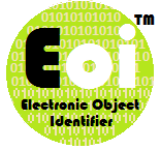Geopolitical Dynamics: Syria's Diplomatic En-deavors in a Complex Region
Abstract
In order to prevent tensions, promote economic cooperation, and obstruct regional integration, the document emphasizes the importance of territorial and economic disputes within the Syria Territory. It highlights how diplomacy plays a key role in reaching agreements and resolving these conflicts. Regarding Syria's position regarding Israel, diplomatic endeavors are essential for resolving more general geopolitical issues.
Syria's strategic location makes it a key player in trade routes, and diplomatic initiatives are aimed at ensuring economic benefits and regional stability. Syria's diplomatic landscape is further shaped by Russian support, which offers political backing in international negotiations. The Geneva Conference, Astana, and Sochi processes are important platforms for tackling the complex issues at hand, bringing together regional and international players to identify all-encompassing solutions.
Overall, the document elucidates how diplomacy not only addresses territorial and economic concerns within Syria but also navigates the complexities of the broader geopolitical context, such as Syria's role in the Arab-Israeli conflict and its economic aspirations linked to trade routes. It highlights various diplomatic initiatives that can promote stability, prosperity, and mutual benefits while also fostering regional integration. Policymakers who want to use diplomatic means to advance peace and stability in this region will find this information useful.
Keywords: Syria, Diplomacy, Geneva, Astana, and Sochi.
Views & Downloads Stats:
Downloads
Published
How to Cite
Issue
Section
License
Copyright (c) 2023 Hanna-e-Kalbi, Shafia Jamil*, Aaliabah Sajjad

This work is licensed under a Creative Commons Attribution-ShareAlike 4.0 International License.








